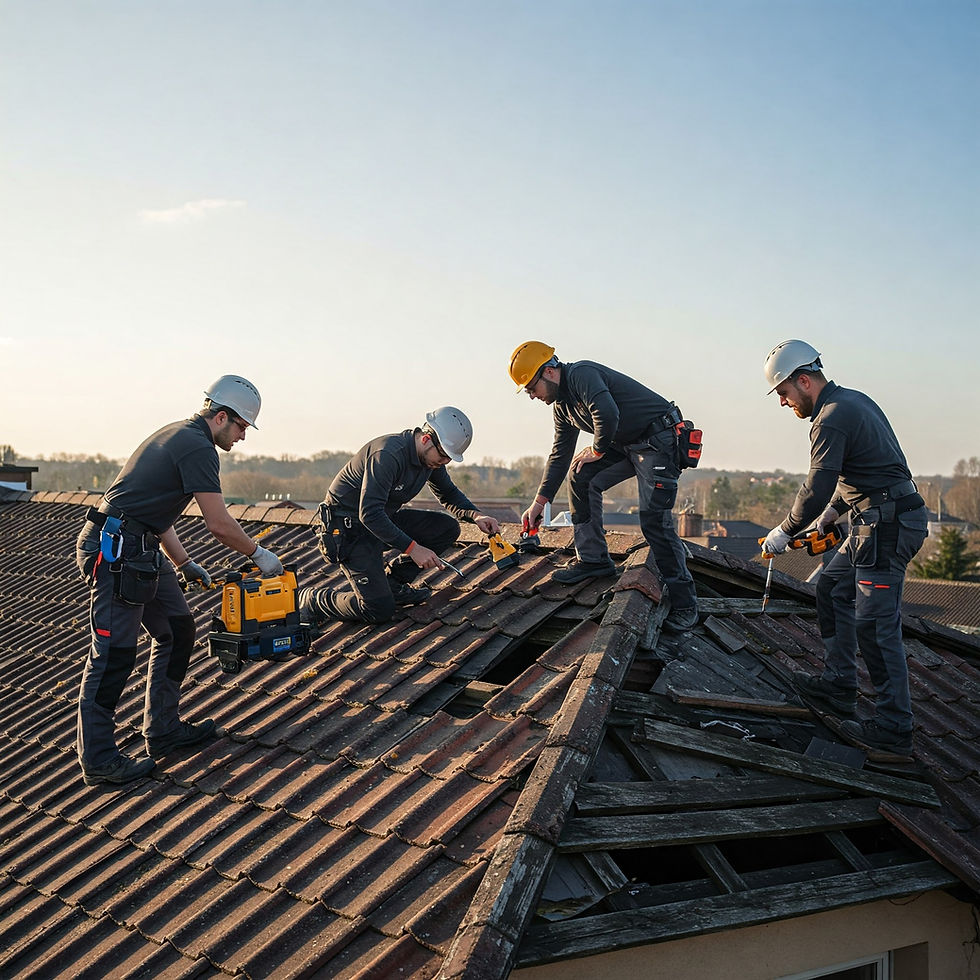Understanding the Impact of Seasonal Changes on Roof Damage and Repair Needs
- Adam Smith
- May 15
- 3 min read
The roof often gets less attention than it deserves, yet it plays a crucial role in shielding homes from harsh weather. As seasons shift, so do the risks to your roof. Knowing how these seasonal changes affect your roof can help you maintain it better, saving you from costly repairs later. This article explores how each season impacts roof damage and offers practical advice for homeowners.
Winter Woes: Snow and Ice Concerns
Winter is tough on roofs. Snow buildup can exert extreme pressure, especially on flat roofs. According to the National Roofing Contractors Association, a foot of wet snow can weigh around 20 pounds per square foot. Ice dams can also create serious problems. They form when heat escapes from your attic, melting snow that then refreezes at your eaves. This leads to water pooling under shingles, causing leaks and potentially severe damage.
To prevent issues, homeowners should schedule regular roof inspections during winter. A local roofing expert can evaluate your roof and address any potential problems before they escalate.
Spring Thaw: Assessing for Damage
When winter ends, spring brings the thaw. This period is crucial for checking your roof, as the melting snow reveals any hidden damage. Homeowners should pay attention to signs of leaks or structural problems that may have resulted from winter’s harsh conditions.
Spring rains can worsen any vulnerabilities in your roof. Common issues include cracked or loose shingles and clogged gutters filled with debris. Research shows that clogged gutters can lead to roof leaks, especially after heavy rain.
Engaging in regular maintenance, such as checking gutters and shingles, can significantly reduce the risk of extensive repairs. Experts suggest that homeowners who take proactive measures are 30% less likely to face major repairs in the summer months.

Summer Heat: UV Rays and Storms
Summer poses its own challenges. Intense UV rays can break down roofing materials. Studies indicate that roofs exposed to direct sunlight can experience a temperature increase of up to 150 degrees Fahrenheit, reducing the lifespan of roofing materials.
Additionally, summer is prime time for thunderstorms, which may bring strong winds and hail. These conditions can compromise both flat and pitched roofs. After severe storms, it’s essential to inspect your roof for missing shingles or any damage caused by debris. Prompt action can prevent further issues.
A professional inspection at the end of summer can prepare homeowners for fall, ensuring roofs are robust enough to withstand upcoming weather changes.
Fall Preparations: Preparing for Winter
With autumn’s arrival, it’s time to get your roof ready for winter. Falling leaves can block gutters, leading to backups that retain water. This situation can increase the likelihood of leaks. Homeowners should prioritize cleaning out gutters and downspouts to ensure proper water flow.
Additionally, it is wise to inspect and repair any loose or damaged shingles. If the damage is severe, a roof replacement may be necessary. Hiring a roofing contractor for an autumn inspection can provide peace of mind as you prepare for winter's challenges.
Safeguarding Your Roof Investment
Understanding how seasonal changes affect your roof is essential for maintaining its integrity. By being proactive with inspections and maintenance, you can protect your home and extend the life of your roof. Regular checks during transitional seasons can save homeowners significant costs related to roofing repairs.
Address small issues promptly to avoid them becoming substantial problems. Consult a knowledgeable roofing contractor and schedule routine inspections. Keeping your roof in sound condition is crucial for the overall health of your home and will pay off in the long run.


Comments